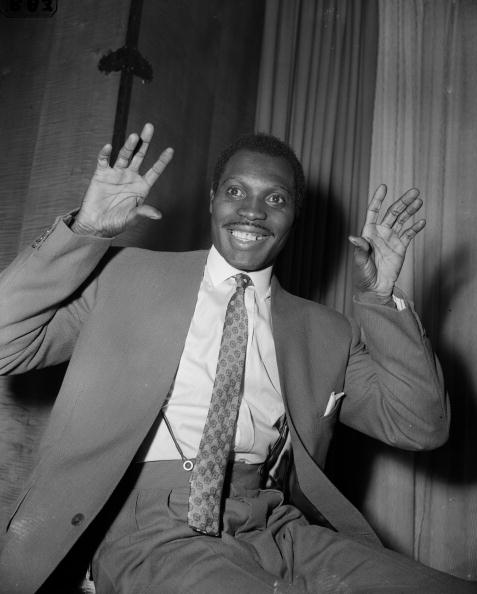A WINDRUSH pioneer has been honoured with a blue plaque at the house he used to live in when he first began a new life in Britain.
Lord Kitchener, also known as Aldwyn Roberts, was a celebrated musician known as the “grandmaster” of calypso when he arrived at Tilbury Docks on the HMT Empire Windrush 75 years ago.
He is remembered fondly for singing the calypso he penned on the journey across waters: “London is the place for me, London this lovely city”.
To mark the day he docked with his fellow passengers, officials and community leaders gathered in Trafford on Stretford Road, Manchester to see the historic plaque unveiled at just one of his former homes in the northern city.
The plaque was organised by Nubian Jak Community Trust and Trafford borough council.
Cllr Tom Ross, Leader of Trafford Council, said: “Lord Kitchener was a great entertainer who brought life to Manchester. He brought calypso music to the UK, as well as owning nightclubs.
“He is a great example of how the Windrush generation have contributed to the UK society, so it was fitting that we unveiled a blue plaque in his honour on the 75th anniversary of the Windrush’s arrival.
“It was a privilege to be at the unveiling where we could honour a musical legend of Trafford and Trinidad.”
Born in Arima, Trinidad Lord Kitchener took with him the calypso rhythms of the West Indies to Britain and recorded songs for the Parlophone, Melodisc and Lyragon labels.
As well as popularising Trinidadian music across the Caribbean, his talents were also spotted by white audiences as the vibrant culture boomed in the UK.
The singer-songwriter even composed music for the legendary performer Harry Belafonte and amassed the admiration of Royalty when Princess Margaret saw him perform.
Tyrone Roberts, Lord Kitchener’s adopted son, proudly told The Voice that his dad’s music lives on till this day.
“My dad’s music lives on forever, it will live on for the next generation. That’s where it came from, that’s where it stems from – old school calypso.
“My sister’s and brother’s got in touch with my wife about this [plaque unveiling] and they wanted me to come and represent my family. So, we are all very proud,” he said.
Lord Kitchener married Elsie Lines on 14th May 1953 and despite the lyrics that made him famous, he eventually settled in Manchester, living in multiple houses throughout the city.
In 1956 after Manchester United won the League titled he penned a triumphant calypso called The Manchester Football Double. The talented artist was also an active community member and was one of the many people that helped create Notting Hill Carnival in the 1960s as race relations eroded.
He went on to perform at Manchester Carnival years later.
Dr Ken McIntyre, an educational phycologist and calypso fan, told The Voice Lord Kitchener’s impact as a member of the Windrush generation is important to remember.
“Kitchener was part of Windrush generation. In fact, it’s 75 years today that the HMT [Empire] Windrush docked at Tilbury.”
“The commemoration of that just adds a bit of a highlight to that whole episode where the rest of it has just become a major social injustice. But for him, and for what we’re celebrating today it’s just one shining light on that whole miasma that became the Windrush,” he said.
“This plaque is tremendous, both as a Trinidadian and as a Black person as a reminder that that generation consisted of some very, very talented and skilled people.
“Kitchener was one of them and he became the most famous obviously, because he’s got a plaque today, but his contribution to music, to developing Caribbean and Trinidadian culture is immense.”
He added: “So it’s right he should be recognised in this way, he should have a permanent reminder of his presence in Manchester.”
Lord Kitchener returned to Trinidad in 1962 and a statue of him stands tall in his hometown of Arima.
He died on 11th February 2000, having achieved critical acclaim for his contribution as a calypsonian and as a member of the Windrush generation.


Comments Form